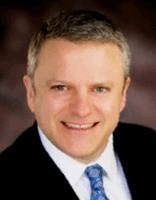Every Company Tells A Story: Orexigen, Anti-Obesity And Outsourcing

By Louis Garguilo, Chief Editor, Outsourced Pharma

Just like with pictures, every company tells a story. For its true grit and determination in the face of regulatory and market adversity, and its survival in part because of its ability to work with outsourcing partners, no company tells us a better story than Orexigen.
And nobody tells it better than Orexigen’s Senior Vice President, Technical Operations, Phil Roberts. In this part one, he’ll unravel a plot that spills onto the anti-obesity market, an evolving regulatory policy, and a commercial partner that both giveth and taketh away. Then in a following article, Roberts will detail how an enlightened understanding of outsourcing and working with a supplier network helped pluck the company from turbulent waters.
Drugs To Fight Obesity
 At one point in time, the promise of obesity drugs as the next potential blockbusters had the industry all astir. But it hasn’t quite worked out as anticipated. Orexigen’s story starts with three drugs in the hunt for FDA approval of branded anti-obesity drugs:
At one point in time, the promise of obesity drugs as the next potential blockbusters had the industry all astir. But it hasn’t quite worked out as anticipated. Orexigen’s story starts with three drugs in the hunt for FDA approval of branded anti-obesity drugs:
Orexigen with Contrave (naltrexone HCI/bupropion HCl)
Arena Pharmaceuticals, Inc. with Belviq (lorcaserin HCl)
Vivus, Inc. with Qsymia (phentermine and topiramate)
Among the three, Contrave was first set for an early review, after positive advisory board meetings with the FDA. However, it was surprised in early 2011 by a complete response letter (CRL) from the agency, requiring an extensive cardiovascular safety study be performed prior to approval.
“That by itself almost closed the company down,” says Roberts. Orexigen reduced its organization to the core executive team, and began to appeal to the FDA to allow for a “reasonable and rational study design to be conducted.”
During this time, the other two products were approved with agreement from the FDA that the cardiovascular studies could be submitted post-marketing.
Orexigen eventually was able to obtain agreement from the agency to agree to a smaller cardiovascular safety study, and potential approval based on interim results. “That basically fired the company back up,” says Roberts. “We were tasked with getting that study underway quickly, and also prepare for resubmission of the NDA once the interim results were in.”
Orexigen enrolled almost 10,000 patients in just over six months. Interim results demonstrated favorable cardiovascular benefit. The NDA was quickly resubmitted and reviewed, and the FDA approved Contrave.
Not An Everlasting Partnership
Scene two starts with Orexigen’s commercial partner, Takeda. At first, prognosis for success looked good, and sales via Takeda started strong “positionally out of the gates, surpassing the performance of the other two previously-approved agents,” says Roberts.
But market clouds were starting to form. The sunny outlook for anti-obesity drugs to behave like major blockbusters started to fade to market realities. “The market value started to read out on how big these products were going to be,” explains Roberts. “The market's anticipation was for billion-dollar products out of the gate, instead of the still good results we are seeing at sales in the $100 million range.”
This new outlook contributed to some developments. Vivus didn’t obtain a commercialization partner, and built its own sales force. It’s commercial sales appear to be fairly stable at a reduced level, and it appears they still are under those requirements to report results for a cardiovascular safety study.
It can be assumed Belviq sales, too, were perhaps less than expected for both Arena and its commercialization partner, Eisai. In a July 2017 press release, Arena announced it had amended its Belviq marketing and supply agreement with Eisai. The Japanese pharma company was acquiring commercialization rights and “control over global development and commercialization decisions … and is responsible for all lorcaserin development expenses going forward.”
Which brings us back to Orexigen, Contrave, and Takeda. “Takeda built a strong foundation through its commercial efforts, promoting the product with over 900 sales representatives to over 100,000 physicians,” says Roberts. Yet while sales were increasing, the new market realities proved consequential, and according to Roberts, “this type of traditional approach to primary care is expensive.” Additionally, Takeda announced a major reorganization … and obesity was not on its therapeutic target list.
Orexigen made an existential decision. “We bought the rights back from Takeda and brought the product in house,” explains Roberts. “So, if you will, we doubled down on obesity.”
He continues: “Orexigen said, ‘We think we can come up with a way of doing this to find the ultimate value in the product and market.’ We worked with investors to fund our commercialization of the product, and set out on a new path.”
As much as any factor, this decision to gallop down that path was made because Orexigen had both faith in its own manufacturing prowess – it had been the supplier of Contrave in the U.S. – and also a substantial belief it could quickly re-establish and manage a flexible contract development and manufacturing supply chain, this time end-to-end.
In March of 2016, it was announced that Takeda agreed to transfer full responsibilities of the product back to Orexigen. “People assumed it would take up to three-quarters of a year to get the product back in our shop, and then out on the market,” says Roberts. “But we actually brought up a whole commercial organization in a little over three months, a tremendous effort.”
The company’s life, if you will, depended on that speed to build an end-to-end commercial supply chain. How Orexigen has successfully pulled it off is the focus of part two, the telling of which will provide Outsourced Pharma readers with best practices and practical advice for any company relying on outsourcing, or building it’s supply chain … hopefully, though, under somewhat less stressful circumstances.
